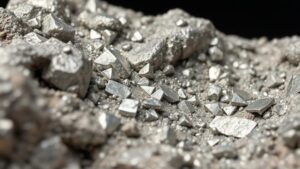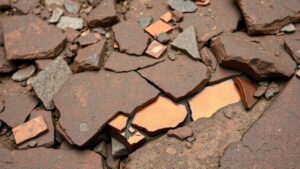How to Recover Gold in High Sediment-Load Stream Areas
How to Recover Gold in High Sediment-Load Stream Areas
Gold recovery in high sediment-load stream areas presents unique challenges for prospectors and miners. The significant amount of sediment can obscure gold particles and complicate traditional panning and sluicing methods. Understanding the techniques and equipment that maximize recovery in these conditions is essential for successful gold extraction.
Understanding High Sediment Loads
High sediment-load stream areas are characterized by a considerable influx of silt, clay, and organic matter, which can dilute golds presence. e areas are typically found in regions with heavy rainfall, runoff, or significant erosion from nearby landscapes. According to the United States Geological Survey (USGS), about 1.5 billion tons of sediment enter rivers annually, affecting both water quality and gold prospecting.
Methods for Gold Recovery
To effectively recover gold in these challenging environments, prospectors can utilize various methods. Here, we discuss some of the most effective techniques:
1. Dredging
Dredging involves using a floating platform with a suction system to extract materials from the riverbed. This method allows for the efficient collection of sediments and gold particles, particularly in deep water. For example, in the Bering Sea, commercial dredging operations have successfully recovered significant quantities of gold despite high sediment loads.
2. High-Volume Sluicing
High-volume sluicing utilizes larger sluice boxes designed to handle increased water and sediment flow. These sluice boxes can trap gold particles more effectively in high-sediment environments. In practice, many miners have reported success using wide, adjustable angle sluice boxes that can be adapted to fluctuating sediment conditions.
3. Gravity Separation Techniques
Gravity separation techniques exploit the difference in density between gold and sediment. Methods such as the use of shaking tables and centrifugal concentrators are particularly effective in high-sediment-load situations. For example, the use of a Knelson concentrator has been shown to improve gold recovery rates by up to 95% in certain conditions.
Choosing the Right Equipment
Selecting appropriate equipment is crucial for efficient gold recovery in high sediment-load environments. Key equipment includes:
- Suction Dredges: Ideal for deep-water mining where sediments accumulate.
- Highbankers: Effective for processing materials directly from stream banks.
- Concentration Equipment: Shaking tables and spiral concentrators can enhance gold separation from sediment.
Best Practices for Effective Gold Recovery
To maximize gold recovery, prospectors should adhere to best practices including:
- Conducting Site Assessments: Before starting, assess sediment conditions, flow rates, and gold distribution.
- Regularly Monitoring Equipment: Ensure machinery is functioning optimally to prevent loss of gold.
- Useing Environmental Conservation: Follow local regulations to minimize ecological impact and restore areas post-mining.
Addressing Common Challenges
High sediment loads can pose challenges such as equipment clogging and decreased visibility. Some proactive solutions include:
- Frequent Maintenance: Schedule regular cleaning of equipment to prevent clogging and increase efficiency.
- Using Flocculants: Chemical agents can help bind particles for easier separation through gravity methods.
Real-World Applications and Success Stories
Several mining operations have successfully adapted to high sediment-load conditions. In areas such as Californias Klamath River, miners have implemented advanced dredging techniques to recover gold amidst challenging sediment levels. Also, modern technologies such as sonar mapping have enabled prospectors to identify optimal locations for gold recovery, showing promising yields even in high-sediment areas.
Conclusion
Recovering gold in high sediment-load stream areas requires specialized knowledge and effective equipment to navigate the complexities involved. By understanding the characteristics of these environments and employing the right techniques, prospectors can improve their chances of successful gold recovery. Always remember to prioritize responsible mining practices to ensure minimal environmental impact.


